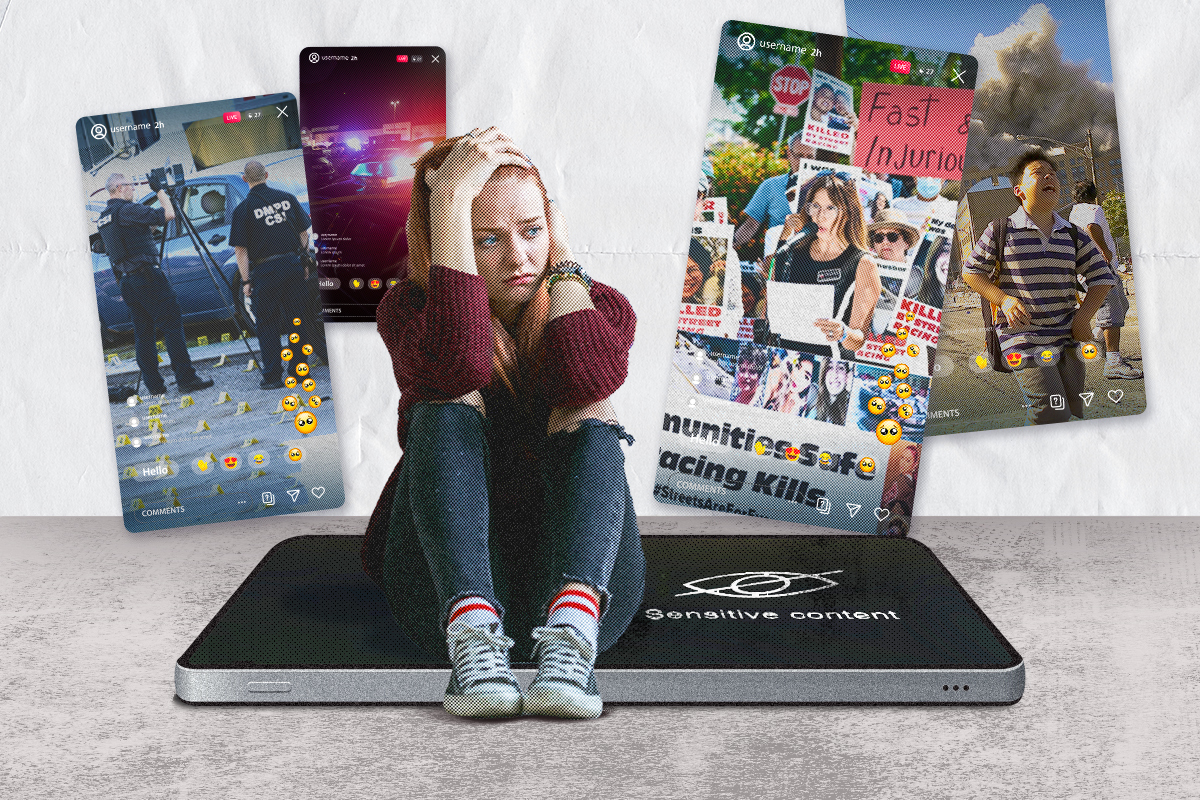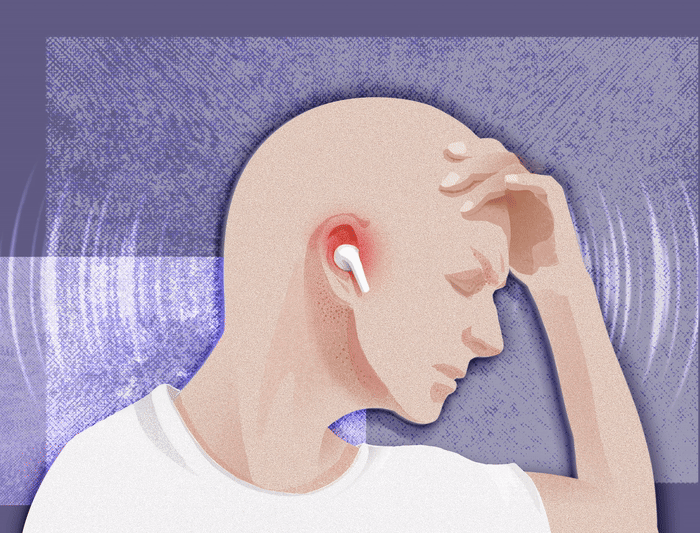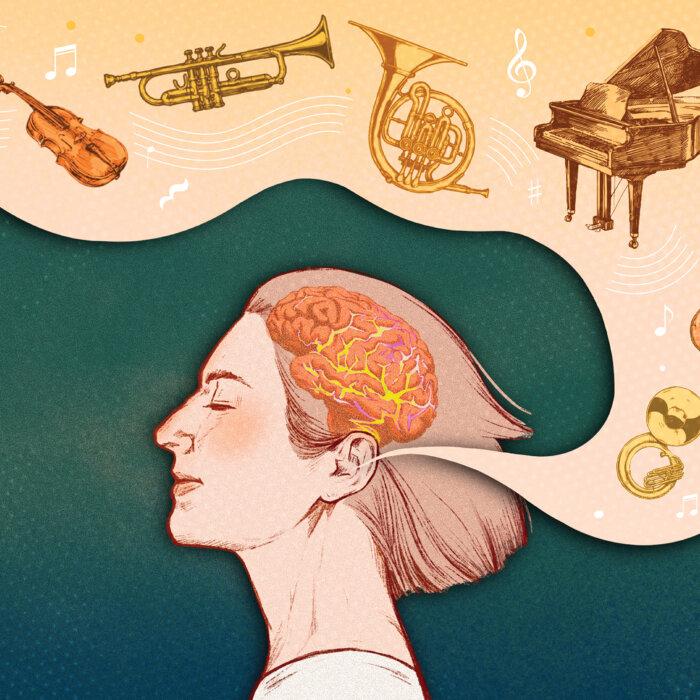“As a mental health professional, I am pleading with you not to watch the video.”
Kathleen Lyons, a licensed clinical professional counselor, penned this warning about the graphic video of Sonya Massey’s death on social media. She wrote this the day that police released body-camera recordings to Massey’s family and then to the public online. The video has garnered around 5 million views.
Massey, a 36-year-old black woman, called 911 on July 6 because she thought someone was prowling around outside her house. She ended up being shot by a sheriff’s deputy, who has since been arrested and charged with her murder.
The audio transcript had already been released, as well as details of the shooting. Lyons had no doubt that the video of Massey’s death would be graphic and disturbing to the point of disrupting day-to-day functioning for some who viewed it.
In her social media warning, Lyons went on to say: “By all means, stay informed about the matter through the many ways information is being shared, but watching the video is most likely to cause harm directly to you. Secondary trauma is real, and it is not necessary to suffer needlessly in order to honor her precious life or to understand the systemic breakdown that led to her passing.”

Bystander Trauma
Lyons told The Epoch Times that, in her experience, exposure to someone else’s trauma—whether accidentally or intentionally—can interfere with basic coping skills.Secondary trauma syndrome is a more recently understood form of PTSD that explains how those close to trauma—such as public servants responding to crimes or disasters and health care workers tending to the physical and emotional needs of victims—can be affected by it.

Viral Violence
Body cameras are becoming more commonplace, as are bystander videos of police violence, and the content often goes viral. Policies regarding how and to whom body camera footage can be released vary by jurisdiction.Anyone who repeatedly watches videos of deadly events is at risk. “One study found that some people who repeatedly viewed footage of deadly events sustained more trauma than people who witnessed the events in real life,” the Georgia State University Law Review article reads.
“Due to the shift from traditional news to social media, we can now watch violent stories and graphic images in ‘unedited horrific detail.'”
Those already struggling from anxiety, as well as those who tend to have less self-control and more cynicism and neuroticism, are more likely to partake in doomscrolling. Those who continue to expose themselves to violent content may find the habit can fuel anxiety and low mood and even alter their perception of life’s meaning.

Concerns for Young Viewers
Lyons said that repeated exposure to violent content is particularly concerning when it comes to children and adolescents.“Young people are particularly vulnerable because anything they view feels close to them,” she said. “They associate themselves with these stories because they are still so ego-driven. They are working out the ‘what if it happens to me’ ... and they can become very traumatized.”
Social media platforms often add warning labels to graphic content. A representative from Meta told The Epoch Times in an email that its apps can restrict the ability of users under 18 to view such content.
“We’ve developed more than 50 tools and resources to support teens and their parents, and we’ve spent over a decade developing policies and technology to address content that breaks our rules or could be seen as sensitive,” the representative wrote. “Earlier this year, we announced additional protections that are focused on the types of content teens see on Instagram and Facebook.”
The company said it “age-gates” violent or disturbing content, which involves a pop-up window that asks users to verify that they are 18 or older. Age gates are used for content that includes tobacco and gambling.

Unwelcome Exposure
Nick Marchigiani, a 19-year-old college student, said safety efforts won’t stop all teens from viewing violent videos. Much like pornography that has dedicated online spaces, there are pages that feature videos of school fights and self-harm.Marchigiani said that even if a child doesn’t want to see graphic content on their own phone or computer, friends may trick them into watching videos with gore or other disturbing images. He said that one way he’s accidentally encountered violence is on videos that begin with a cute cat or dog video and end with “jump scare” content. That is, it’s unexpectedly frightening or gory.

“Some people get a kick out of tricking you into seeing something you don’t want to see,” he said. “Other people simply like looking at it. You can even not be ‘into’ looking for this stuff, but it can appear because someone you know enjoys this content.”
Other ways teens might encounter graphic content is when bots or other users share videos in comment threads on various apps, he noted. Marchigiani said that as a young teen, he would watch anything his friends showed him because he valued bonding with them over self-preservation.
‘Catch-22’ of Social Media
U.S. Surgeon General Dr. Vivek Murthy declared a state of mental health crisis among youth in 2021. He followed it up in 2023 by declaring a crisis regarding the effects of social media on youth mental health. A 25-page advisory on social media and a section on technology use for parents accompanied his report.
Many social media platforms weren’t initially designed with children in mind, said Jasmine Hood Miller, director of family engagement and community partnerships at Common Sense Media. Digital literacy, tech company accountability, and the mental health harms of life online are unfolding in real time, she told The Epoch Times.
The nonprofit organization creates guides for parents that rate movies, games, apps, and other content. Miller told The Epoch Times that the organization’s employees are, much like their audience, grappling with the complexities of online life as they live it. In many cases, the young adults who grew up in the first generation of social media are helping other age groups navigate it.
“I think young people are getting smarter to understand you have to put your mental health first, and these companies are not doing that,” Miller said. “It’s this catch-22 in that they find [social media] to be something they can’t live without, but also something they don’t want to be a part of.”
Of particular concern are viral videos, nonstop news coverage, and autoplay features, common on apps like YouTube and TikTok that perpetually play videos. Such features can tap into the users’ addiction tendencies using algorithms, as well as expose them to unwanted or shocking content.

- How much time their child spends online.
- Whether online activities impede healthy habits such as sleeping, exercising, reading, and socializing with friends.
- Whether their child is consuming and sharing meaningful and constructive content.
- How their child feels about online content and the time spent on it.
Legislating Out Violence
Much of today’s online safety policy was written before iPhones were invented, and updated safeguards are necessary to “prevent Big Tech from tracking, traumatizing, and targeting young people every second, every minute, and every hour of the day,” according to Sen. Edward J. Markey (D-Mass.).In part, the legislation would require social media companies to mitigate content that includes physical violence. It would also require online platforms to activate settings that would be more protective of minors and their information, including the choice of opting out of content that’s driven by algorithms.
The Electronic Frontier Foundation (EFF), a civil liberties nonprofit for the digital world, noted complications. It said that this legislation could put important information, including news and political commentary, at risk of being censored for causing anxiety or depression.

Age-Appropriate Advice
Common Sense Media emphasizes the importance of age-appropriate conversations. This is especially relevant in the case of real-life tragedy, such as an officer shooting an unarmed woman in her home, Miller said.“You don’t have to watch these images to stay current on the news,” she said. “You can watch maybe a clip but maybe not the whole thing where you are seeing violent or brutal images. If you do want to talk about these issues with your kids, you can use books or movies without taking in that police cam footage, because it is very traumatizing to see.”
Miller said it’s best for parents to begin conversations with children as early as 7 or 8—years before giving them access to social media and smartphones—about how media content makes them feel.

Children younger than 7 believe anything they see could happen to them, for example. They need to know their fears may be unwarranted. If they see traumatic content, they also need reassurance that they are safe. Older children need specific guidance on how to deal with content when it appears.
Without learning about how social media could affect them, young people may not be prepared for inevitable exposure to unsettling content, even if some people may think that content is important.
“Even in the name of justice and raising awareness, it takes a psychological toll that is hard for both the parents and the kids,” Miller said of viral videos that show violence.
Trauma’s Persistence
For children and adults, the visual, immediate, sometimes unexpected, and repeated nature of online videos is an area of global mental health concern, according to Lyons.“It can traumatize a person when something happens out of nowhere, and they weren’t prepared for it; if kids didn’t have a choice to be exposed or they don’t have the coping skills,” she said. “For example, that would be like a 9-year-old who is flipping through YouTube and something pops up and overwhelms their ability to cope with it. That can happen to an adult, too.”
- Intrusive thoughts
- Avoidance
- Hyperarousal, driven by anxiety or fear
- Changes in cognition or mood
- Reactivity, or altering behavior or emotions that might cause them to be more intense and long-lasting.

Coping With Secondary Trauma
Many different coping tools can help those affected by trauma, which may take months or years to overcome.- Be honest about being overwhelmed and having trouble coping.
- See a therapist for cognitive behavioral therapy, eye movement desensitization and reprocessing (EMDR), or other therapies that may not require talking, such as somatic therapy. EMDR is a therapy that involves moving the eyes in a certain way while processing traumatic memories. Somatic therapy focuses on the body-mind connection and includes activities such as yoga, breath work, dance, or acupressure.
- Strategies like grounding, mindfulness, eating healthy food, getting appropriate sleep, and prioritizing physical exercise
“Most importantly, don’t suffer by yourself. Please talk to somebody who is mature, who you trust, and let them know what’s going on with you. But if after two weeks it’s not getting better, we do recommend you talk to your primary care provider.”














